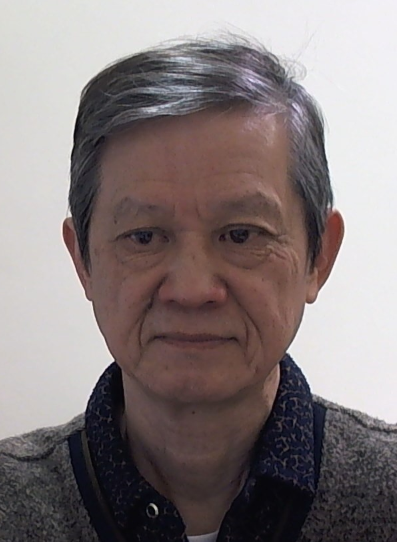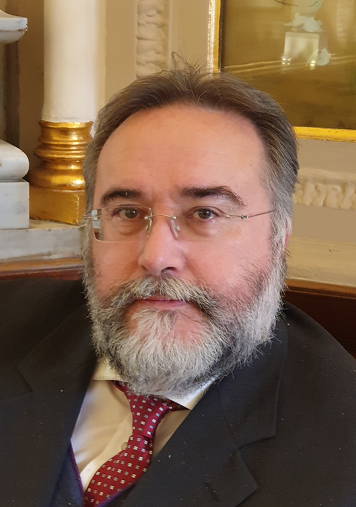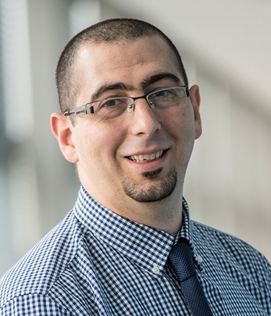 |  |  |
| Professor: Ching-Shyang Chen University of Southern Mississippi, USA. | Professor: Božidar Šarler University of Ljubljana, Slovenia | Professor: Jamil Renno Qatar University, Qatar. |
Tutorial 1
Friday, April 28, 2023 Time: 9:00 – 10:30
Meshless Methods with Scientific Computing
 | Professor: Ching-Shyang Chen University of Southern Mississippi, USA. Department of Mathematics. |
Abstract: During the past two decades, radial basis functions have emerged as a popular meshless method which is analogy to the wireless in communicational technology or paperless in the digital communication. With the new meshless technology, no tedious mesh generation is required for solving various kinds of science and engineering problems and enormous saving for human labor in data preparation and computational time can be achieved. In this lecture, we first present the basic idea of radial basis functions with some simple and yet effective techniques for the reconstruction of 3D surface. Next, the state-of-the-art computational methods using radial basis functions and the method of fundamental solutions for solving partial differential equations in science and engineering will be introduced. Demonstration for computer graphics using meshless methods via MATLAB will also be presented.
About the Presenter
C.S. Chen is currently Professor of Mathematics at the University of Southern Mississippi where he served as the Chair of the Department of Mathematics during 2005-2010. Prior to joining the University of Southern Mississippi, Prof Chen was a faculty member at the University of Nevada, Las Vegas for 17 years. His main research interests lie in meshless methods, and more specifically, in using radial basis functions and the method of fundamental solutions for solving partial differential equations. Over the past 30
years, Prof Chen has devoted his time developing numerical algorithms for solving various types of partial differential equations in highly irregular domains, using easy-to-understand mathematics and simplified computer coding. He served as the founding Editor-in-Chief for the journal Computers, Materials, and Continua during 2000-2004 and members of editorial board for a number of professional journals. He is currently serving as an Associate Editor of Engineering Analysis with Boundary Elements and Advances in Applied Mathematics and Mechanics.
Tutorial 2:
Friday, April 28, 2023 Time: 11:00 – 12:30
Computational Modelling of Multiphase Systems
 | Professor: Božidar Šarler University of Ljubljana, Slovenia Faculty of Mechanical Engineering & Institute of Metals and Technology, Ljubljana. |
Abstract: Multiphase systems are found in a vast spectrum of natural and technological systems. These systems have many unique features, such as forming precious jewels found in nature and casting high-tech casts weighing several hundreds of tons. This tutorial aims to give an overview of the physical processes typical for these systems and present the multiscale computational modelling of them from the nucleation at the microscopic level to the properties of large systems. We will explain how the external fields can alter the behaviour of these systems and what type of defects can be found in the related technological processes. We will focus on the contemporary physical, artificial intelligence and numerical modelling strategies for coping with these systems. Several simulation cases will be demonstrated based on experimentally verified physical models to mitigate these systems’ porosity, macrosegregation, and cracks.
About the Presenter
Professor Božidar Šarler chairs the Department for Fluid Dynamics and Thermodynamics, Faculty of Mechanical Engineering, University of Ljubljana and the Laboratory for Simulation of Materials and Processes at the Institute of Metals and Technology in Ljubljana, Slovenia.
He worked abroad cumulative for more than four years at prestigious institutions in Europe, USA, China and Australia. He is giving courses as a visiting professor at the University of Naples “Parthenope” Italy, Yanshan University China, and Hohai University China.
His research interest is focused on multiscale and multiphysics simulations of multiphase systems. He conducts related projects for EU funding schemes, National Academies USA, Helmholtz Association Germany, Chinese Academy of Sciences and leading metallurgical equipment producers, to name a few.
He has received several domestic and international awards. He serves in the European Union ESFRI Energy Working Group and Eurotherm Committee.
Tutorial 3
Friday, April 28, 2023 Time: 14:30 – 16:00
Modelling the Vibration of Waveguides using the Wave and Finite Element Method
 | Professor: Jamil Renno Qatar University, Qatar. Department of Mechanical & Industrial Engineering. |
To model the dynamic behavior of waveguides (e.g., beams, bars, etc.) can be performed analytically in a few simple cases only. For waveguides with complicated cross-sections or at higher frequencies, one has to use element-based methods such as the finite element or boundary element method. However, at high-frequency, short-wavelength vibrations, the number of elements used to accurately describe the dynamics of the waveguide will grow considerably such that the computational cost becomes prohibitive. Many methods have been developed in the literature to address this issue. However, in this tutorial we will introduce the audience to the following:
- Modelling the dynamic behavior of waveguides
- A comparison between low-frequency and high-frequency methods
- Introduction to the Wave and Finite Element method
- Modelling of free wave propagation and its applications
- Modelling of the forced response of waveguides
- Academic and Industrial Case Studies
About the Presenter
Dr. Jamil Renno is Associate Professor in the Department of Mechanical & Industrial Engineering at Qatar University. His research interests lie in the area of vibration and structural dynamics with applications to the oil and gas industry and transportation sectors.
Before joining Qatar University, Jamil was the Technical and Business Development Lead of the Department of Dynamic Engineering in Doosan Babcock where he led investigations and proposed solutions to vibration problems in the oil and
gas industry. His experience includes working in the North Sea (both the UK and Norwegian sectors), Middle East and Central Asia. Before working in industry, Dr. Renno held a Lectureship in Structural Dynamics at the Institute of Sound and Vibration Research at the University of Southampton and was also Fellow of the UK Engineering and Physical Sciences Research Council. At the University of Southampton, Jamil worked on solving vibroacoustic problems in the mid-frequency range, mainly using the wave finite element method.
Jamil is a Chartered Engineer, a Fellow of the UK Institute of Mechanical Engineers (CEng FIMechE) and a Fellow of the UK Higher Education Academy (FHEA).